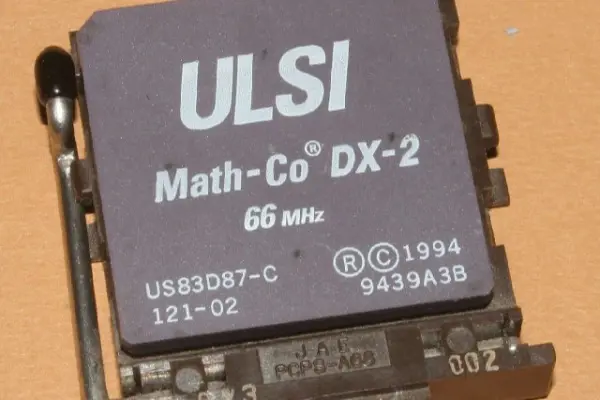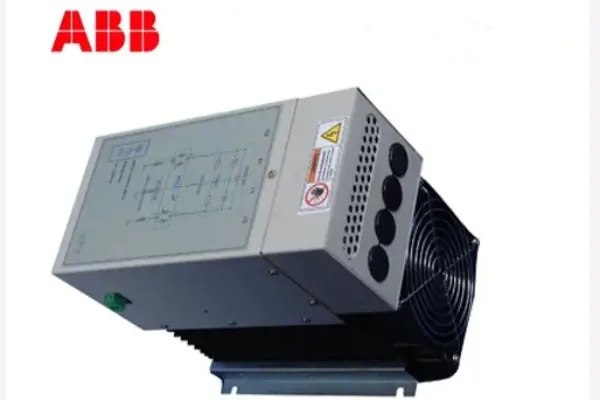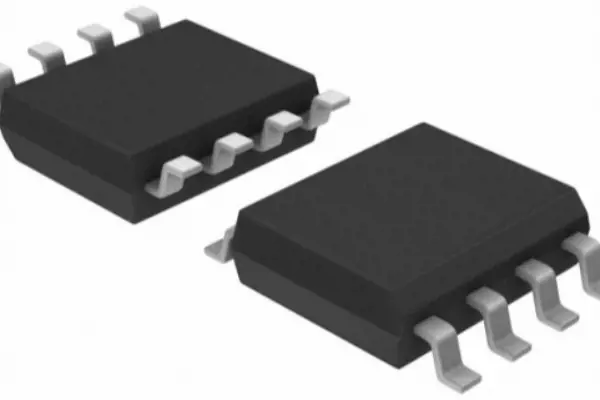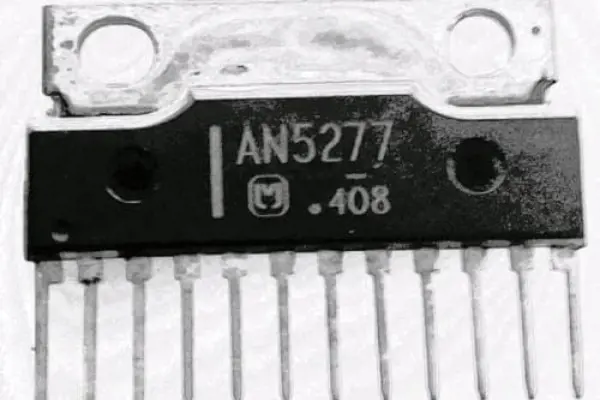7 Different Types of Integrated Circuit 2023
 Published: Jun 16, 2023
Published: Jun 16, 2023
Contents
Integrated circuits (ICs) are the heart and soul of modern electronics, enabling the miniaturization, integration, and optimization of electronic systems. These small electronic devices consist of numerous electronic components, such as transistors, resistors, and capacitors, all interconnected on a single semiconductor chip.
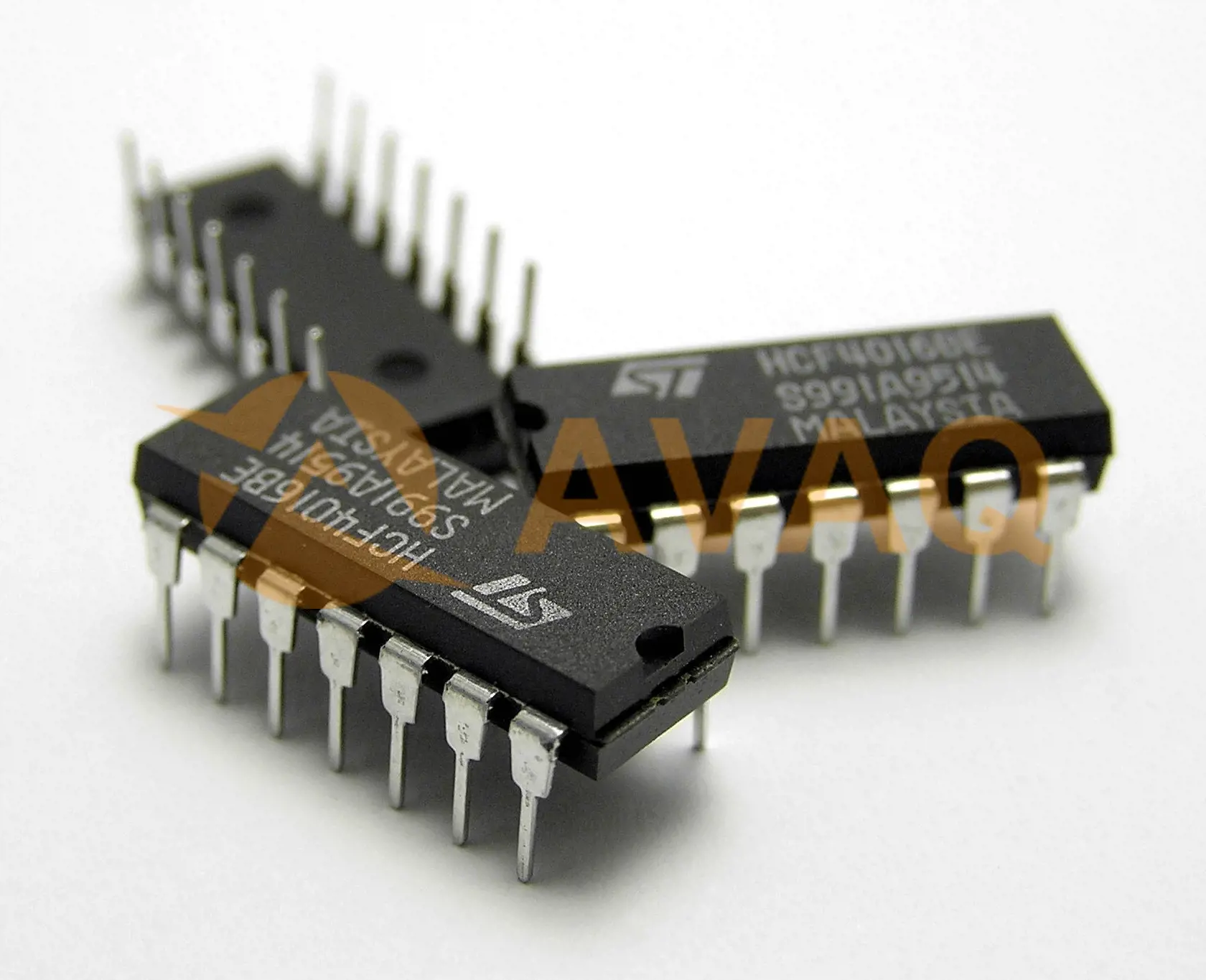
In this article, we will delve into the world of integrated circuits, exploring the different types and classifications that exist.
How to Classify Integrated Circuit
Methods for classifying integrated circuits can be based on the following:
Functions and uses: Classify integrated circuits according to their main functions and application areas. For example, digital integrated circuits are used for digital signal processing and logic operations, analog integrated circuits are used for processing continuous analog signals, memory integrated circuits are used for data storage and retrieval, and communication integrated circuits are used for data transmission and communication, etc.
Technology and Design Characteristics: Classifies integrated circuits according to their specific technology and design characteristics. For example, integrated circuits based on CMOS technology, high-speed integrated circuits, low-power integrated circuits, etc.
Complexity and Integration: Classifies integrated circuits according to their level of complexity and integration. For example, integrated circuits can be classified into large-scale integration (LSI), very large-scale integration (VLSI), and ultra-ultra-large-scale integration (ULSI), etc.
Architecture and Structure: Classifies integrated circuits according to their internal structure and architecture. For example, an integrated circuit may be divided into processors, memories, input/output interfaces, and so on.
Models and specifications: Classify integrated circuits according to their specific models and specifications. Each integrated circuit has a unique model number and specification used to distinguish different functions and performance.
7 Different Types of Integrated Circuit
There are various types of integrated circuits (ICs) available, each designed to perform specific functions. Here are some of the different types of integrated circuits:
1)Digital Integrated Circuits
Digital integrated circuits process discrete binary signals using logic gates, flip-flops, counters, and other components. They are widely used in computers, communication devices, and digital electronic systems.
>1. Design Principles:
Digital Integrated Circuits are designed based on principles that involve processing and manipulating digital signals. They utilize logic gates (such as AND, OR, NOT) and flip-flops to perform digital operations and logical functions. By combining these basic components, more complex digital circuits like counters, memory units, and arithmetic logic units can be created. Design principles of Digital ICs also encompass concepts of timing control, clock synchronization, and data paths.
>2. Application Scenarios:
Digital Integrated Circuits find extensive applications in various fields. They serve as critical components in computers, mobile devices, communication systems, and embedded systems. The application scenarios of Digital ICs include but are not limited to the following:
- Data processing: Digital ICs perform operations like arithmetic calculations, logical decisions, and data manipulation.
- Control systems: Digital ICs enable control functions in devices and systems, such as in robotics, industrial automation, and smart home technology.
- Communication: Digital ICs facilitate digital signal processing, encoding, decoding, and modulation for efficient data transmission and communication.
- Memory storage: Digital ICs include memory chips that store and retrieve data in computers and electronic devices.
>3. Related Technologies:
Digital Integrated Circuits are closely tied to several related technologies. Some notable ones include:
- Complementary Metal-Oxide-Semiconductor (CMOS): CMOS technology is widely used in Digital ICs due to its low power consumption and high noise immunity.
- Very Large-Scale Integration (VLSI): VLSI technology allows for the integration of millions or billions of transistors on a single chip, enabling complex and powerful Digital ICs.
- System-on-Chip (SoC): SoC technology integrates multiple digital and analog components, including processors, memory, and peripherals, onto a single chip.
>4. Representative Chips:
There are numerous representative Digital ICs available, each catering to specific applications. Some well-known representative chips include:
- Intel 8051: A widely used microcontroller with a rich set of features, including a versatile instruction set and integrated peripherals.
- NVIDIA GeForce: A series of high-performance graphics processing units (GPUs) designed for gaming and multimedia applications.
- ARM Cortex-A series: Processors based on ARM architecture, widely used in smartphones, tablets, and embedded systems.
- Xilinx Spartan: A series of field-programmable gate arrays (FPGAs) known for their flexibility and programmability.
2)Analog Integrated Circuits
Analog integrated circuits handle continuous electrical signals such as audio, video, temperature, or voltage. They include amplifiers, filters, and analog switches, and are commonly used in audio/video equipment, communication systems, and sensor interfaces.
>1. Design Principles:
Analog Integrated Circuits are designed to process and manipulate continuous analog signals. They utilize various analog components such as operational amplifiers, comparators, filters, and voltage regulators. These components enable functions like amplification, filtering, signal conditioning, and voltage regulation. Analog ICs are designed to accurately process and represent real-world analog quantities.
>2. Application Scenarios:
Analog Integrated Circuits find extensive applications in diverse fields. They are widely used in the following application scenarios:
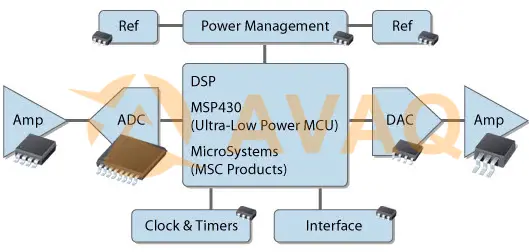
- Audio and Video Systems: Analog ICs play a crucial role in audio amplifiers, video signal processing, and display driver circuits, ensuring high-quality audio and video reproduction.
- Communication Systems: Analog ICs are essential in modulators, demodulators, radio frequency (RF) circuits, and transceivers for wireless communication systems, including cellular networks, Wi-Fi, and Bluetooth.
- Sensor Interfaces: Analog ICs interface with various sensors like temperature sensors, pressure sensors, and light sensors, amplifying and conditioning the sensor signals for accurate measurements.
- Power Management: Analog ICs are used in voltage regulators, power converters, and battery charging circuits to efficiently manage power distribution and ensure stable power supply.
>3. Related Technologies:
Analog Integrated Circuits rely on several related technologies to achieve their desired performance. These technologies include:
- Bipolar Junction Transistors (BJTs) and Metal-Oxide-Semiconductor Field-Effect Transistors (MOSFETs): These are the primary transistors used in analog ICs for amplification and signal processing.
- CMOS Technology: Complementary Metal-Oxide-Semiconductor (CMOS) technology is commonly employed in analog ICs due to its low power consumption and integration capabilities.
- Analog-to-Digital Converters (ADCs) and Digital-to-Analog Converters (DACs): These conversion circuits allow the interface between analog and digital domains, enabling signal conversion and processing.
>4. Representative Chips:
Analog Integrated Circuits include various representative chips known for their performance and versatility. Some notable examples are:
- Texas Instruments LM741: A widely used operational amplifier (op-amp) that provides high-gain and versatile analog signal processing capabilities.
- Analog Devices AD8250: A precision instrumentation amplifier designed for accurate signal amplification and sensor interfacing applications.
- Maxim MAX232: A popular RS-232 transceiver IC used for serial communication between computers and peripherals.
- Linear Technology (now part of Analog Devices) LT3080: A high-performance adjustable voltage regulator with low dropout voltage, ideal for power management applications.
3)Mixed-Signal Integrated Circuits
Mixed-signal integrated circuits combine both digital and analog circuitry to process both discrete digital signals and continuous analog signals. They are used for applications such as analog-to-digital conversion, digital-to-analog conversion, and digital signal modulation/demodulation.
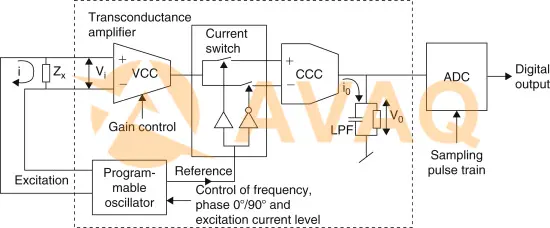
>Design Principles:
Mixed-Signal Integrated Circuits combine both analog and digital circuitry on a single chip, allowing for the processing of both analog and digital signals. They are designed to handle and interface between continuous analog signals and discrete digital signals. These ICs integrate analog-to-digital converters (ADCs), digital-to-analog converters (DACs), analog and digital signal processing circuits, and other components to achieve the desired mixed-signal functionality.
>Application Scenarios:
Mixed-Signal Integrated Circuits are utilized in a wide range of applications where analog and digital signals coexist. Some common application scenarios include:
- Data Conversion: Mixed-Signal ICs are used in applications that require conversion between analog and digital domains, such as audio and video systems, measurement instruments, and data acquisition systems.
- Communication Systems: Mixed-Signal ICs play a crucial role in wireless communication systems, including cellular networks, Wi-Fi, Bluetooth, and RF transceivers, where they handle both analog RF signals and digital baseband signals.
- Sensor Interfaces: Mixed-Signal ICs interface with various sensors, amplifying and conditioning analog sensor signals before converting them to digital signals for further processing and analysis.
- Automotive Electronics: Mixed-Signal ICs are extensively used in automotive applications, including engine control units, vehicle diagnostics, and driver assistance systems, where they interface with sensors, process signals, and control actuators.
>Related Technologies:
Mixed-Signal Integrated Circuits rely on various technologies to achieve their functionality. These technologies include:
- CMOS Process: Complementary Metal-Oxide-Semiconductor (CMOS) technology is commonly used in Mixed-Signal ICs due to its ability to integrate both analog and digital circuitry with low power consumption.
- Data Converters: High-quality analog-to-digital converters (ADCs) and digital-to-analog converters (DACs) are critical components in Mixed-Signal ICs, enabling the conversion between analog and digital signals.
- Mixed-Signal Simulation and Design Tools: Specialized simulation and design tools are used to model, simulate, and verify the behavior and performance of Mixed-Signal ICs.
>Representative Chips:
There are numerous representative Mixed-Signal ICs available, each designed for specific applications. Here are a few examples:
- Texas Instruments ADS1298: A highly integrated analog front-end (AFE) IC designed for medical applications, such as electrocardiogram (ECG) monitoring systems.
- Maxim Integrated MAX31865: A precision digital temperature sensor IC that combines analog signal conditioning and digital temperature conversion capabilities.
- Analog Devices ADSP-2156x: A series of mixed-signal digital signal processors (DSPs) designed for applications requiring high-performance signal processing and mixed-signal functionality.
- NXP Semiconductors LPC4300: A family of microcontrollers that combines a powerful ARM Cortex-M4 processor with integrated analog peripherals for mixed-signal applications.
4)Memory Integrated Circuits
Memory integrated circuits store and retrieve data. They include random-access memory (RAM), read-only memory (ROM), and flash memory. Memory ICs are widely used in computers, mobile devices, and embedded systems for temporary and permanent data storage.
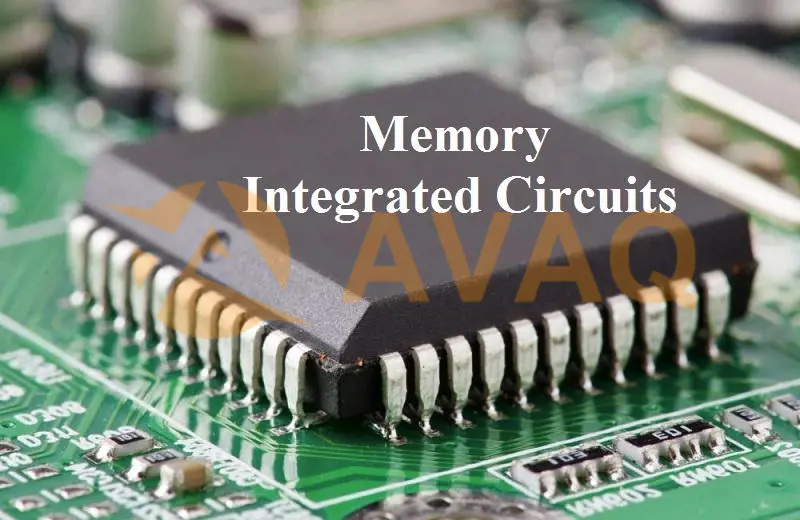
>Design Principles:
Memory Integrated Circuits are designed to store and retrieve digital information. They are built using various memory cell technologies, such as Static Random-Access Memory (SRAM), Dynamic Random-Access Memory (DRAM), Flash memory, and Electrically Erasable Programmable Read-Only Memory (EEPROM). These memory cells are organized into arrays and are accessed through addressing and data lines. The design principles of Memory ICs involve optimizing density, speed, power consumption, and reliability to meet the requirements of specific applications.
>Application Scenarios:
Memory Integrated Circuits are widely used in numerous applications that require data storage and retrieval. Some common application scenarios include:
- Personal Computers: Memory ICs, such as DRAM and SRAM, are used as primary and cache memory in personal computers to store and access data rapidly.
- Mobile Devices: Memory ICs, including NAND and NOR Flash memory, are used in smartphones, tablets, and portable media players for storing operating systems, applications, and user data.
- Consumer Electronics: Memory ICs are used in gaming consoles, digital cameras, smart TVs, and other consumer electronics devices for data storage and firmware updates.
- Automotive Systems: Memory ICs are used in automotive applications, such as engine control units, infotainment systems, and driver-assistance systems, to store configuration data and software code.
>Related Technologies:
Memory Integrated Circuits rely on various technologies to achieve their functionality and performance. These technologies include:
- Semiconductor Process Technology: Advances in semiconductor process technology, such as FinFET and deep submicron processes, enable the integration of more memory cells into a smaller chip area, leading to increased memory capacity and improved performance.
- Memory Cell Architectures: Different memory cell architectures, such as 1T-DRAM, 6T-SRAM, and multi-level cell (MLC) Flash, are employed to optimize the trade-offs between density, speed, power consumption, and cost in memory ICs.
- Memory Controllers: Memory ICs are often paired with memory controllers that manage the access, timing, and data transfer between the memory IC and the host system.
>Representative Chips:
There are several representative Memory ICs available, each designed for specific memory requirements. Here are a few examples:
- Samsung K4B2G1646F: A DDR3 SDRAM chip commonly used in computer systems for high-speed data storage and retrieval.
- Micron MT29F1G08ABAEAWP: A NAND Flash memory chip used in a wide range of consumer electronics devices for non-volatile data storage.
- Intel 29F16B08CCME2: A NOR Flash memory chip used in applications where fast read access and random access are critical, such as boot code storage in embedded systems.
- Microchip Technology 24LC256: An EEPROM chip used for non-volatile data storage in small-scale applications, such as industrial sensors and microcontrollers.
5)Microprocessors
Microprocessors are special digital integrated circuits that integrate a central processing unit (CPU), memory, and other components. They are the "brain" of computers and digital devices, executing instructions and performing complex calculations.
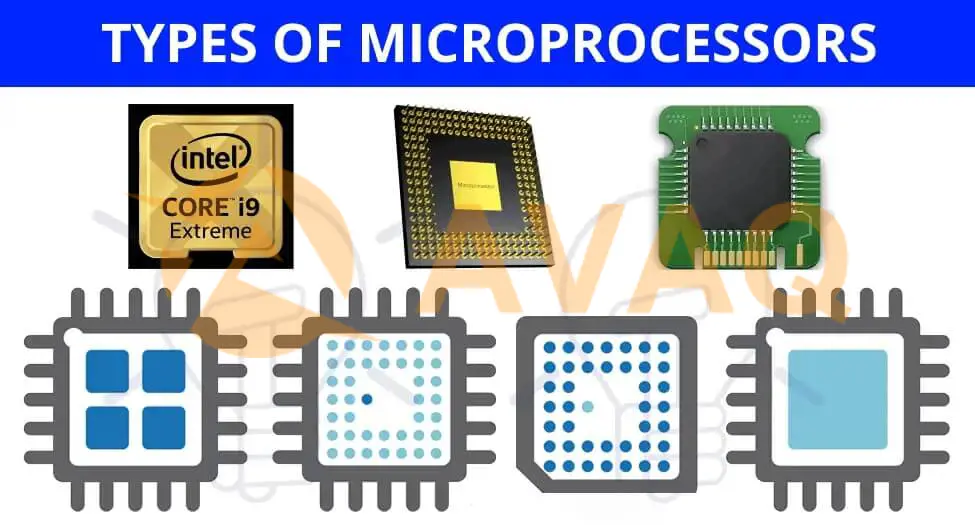
>Design Principles:
Microprocessors are the central processing units (CPUs) of computers and other digital devices. They are designed to execute instructions and perform calculations. Microprocessors consist of arithmetic logic units (ALUs), control units, and registers. They fetch, decode, and execute instructions from memory, enabling the execution of complex tasks. The design principles of microprocessors involve optimizing performance, power consumption, and instruction set architecture.
>Application Scenarios:
Microprocessors find extensive applications in various domains that require computational power and control capabilities. Some common application scenarios include:
- Personal Computers: Microprocessors power desktop computers, laptops, and servers, executing tasks such as running operating systems, applications, and multimedia processing.
- Embedded Systems: Microprocessors are used in embedded systems like smartphones, tablets, home appliances, and industrial equipment, enabling control, communication, and automation functionalities.
- Automotive Systems: Microprocessors control engine management, infotainment systems, advanced driver-assistance systems (ADAS), and in-car communication, contributing to vehicle performance, safety, and connectivity.
- Internet of Things (IoT): Microprocessors enable connectivity and intelligence in IoT devices, facilitating data processing, sensor integration, and network communication.
>Related Technologies:
Microprocessors rely on various technologies to achieve their functionality and performance. These technologies include:
- Instruction Set Architecture (ISA): Microprocessors are designed based on specific ISAs, such as x86, ARM, or RISC-V, which define the set of instructions they can execute and how they interact with memory and peripherals.
- Clocking and Pipelining: Microprocessors employ clock signals to synchronize their internal operations and often use pipelining techniques to improve instruction execution throughput.
- Cache Memory: Microprocessors incorporate cache memory to store frequently accessed data and instructions, reducing memory latency and improving overall performance.
- Power Management: Advanced power management techniques, such as clock gating and voltage scaling, are employed to optimize power consumption in microprocessors.
>Representative Chips:
There are numerous representative microprocessors available, each designed for specific performance requirements. Here are a few examples:
- Intel Core i7: A high-performance microprocessor used in desktop and laptop computers, offering powerful processing capabilities for multitasking, gaming, and content creation.
- ARM Cortex-A series: Microprocessors based on the ARM architecture commonly found in smartphones, tablets, and other portable devices, providing a balance between performance and power efficiency.
- AMD Ryzen: Microprocessors designed for desktop and server applications, offering competitive performance and multi-threading capabilities for demanding workloads.
- Raspberry Pi SoC: System-on-a-Chip (SoC) microprocessors used in single-board computers, IoT devices, and educational platforms, providing a low-cost and versatile computing solution.
6)Microcontrollers
Microcontrollers combine a microprocessor core with memory, input/output interfaces, and timers. They are commonly used in embedded systems for real-time control and processing, found in appliances, automotive electronics, and medical devices.
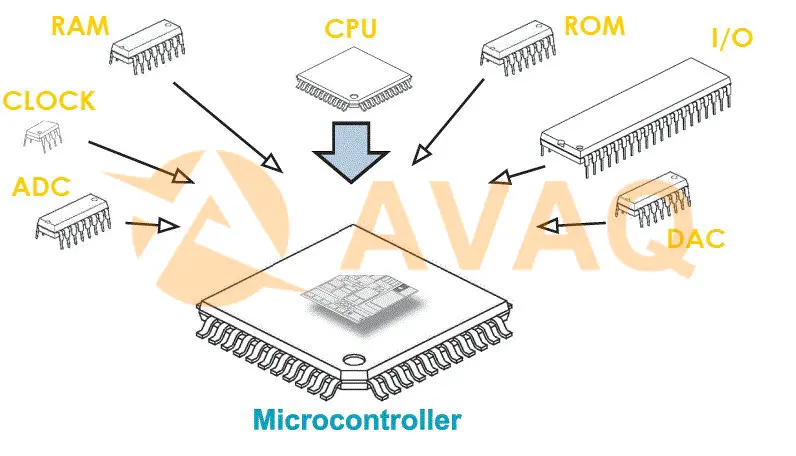
>Design Principles:
Microcontrollers are integrated circuits designed to perform specific tasks and control embedded systems. They consist of a microprocessor core, memory (both program memory and data memory), input/output (I/O) peripherals, and timers/counters. Microcontrollers are optimized for low-power operation, real-time control, and integration of essential components on a single chip. They execute pre-programmed instructions and interact with external devices to perform specific functions.
>Application Scenarios:
Microcontrollers find widespread applications in embedded systems that require control and automation. Some common application scenarios include:
- Home Automation: Microcontrollers are used in smart home systems to control lighting, temperature, security systems, and other home appliances.
- Industrial Automation: Microcontrollers are utilized in industrial control systems, robotics, and manufacturing equipment for precise control and monitoring of processes.
- Automotive Systems: Microcontrollers play a vital role in automotive applications, including engine control units (ECUs), dashboard displays, anti-lock braking systems (ABS), and airbag control.
- Medical Devices: Microcontrollers are used in medical devices such as pacemakers, insulin pumps, and patient monitoring systems to control and monitor critical functions.
>Related Technologies:
Microcontrollers rely on various technologies to achieve their functionality and performance. These technologies include:
- Embedded Systems Programming: Microcontrollers are programmed using low-level languages like C or assembly language to control the operation of peripherals and execute specific tasks.
- Input/Output (I/O) Peripherals: Microcontrollers integrate various I/O peripherals, such as analog-to-digital converters (ADCs), digital-to-analog converters (DACs), serial interfaces (UART, SPI, I2C), and GPIO (General-Purpose Input/Output) pins, to interface with external devices.
- Real-Time Operating Systems (RTOS): Microcontrollers often run on lightweight real-time operating systems or bare-metal firmware, allowing precise control and scheduling of tasks with deterministic timing.
- Low-Power Design Techniques: Microcontrollers incorporate power-saving features such as sleep modes, power gating, and clock scaling to optimize power consumption, making them suitable for battery-powered applications.
>Representative Chips:
There are numerous representative microcontrollers available, each designed for specific application requirements. Here are a few examples:
- Atmel AVR: A popular family of microcontrollers known for their simplicity, low power consumption, and extensive community support.
- Microchip PIC: Microcontrollers from the PIC (Peripheral Interface Controller) family, offering a wide range of options with varying performance and feature sets.
- STMicroelectronics STM32: Microcontrollers based on the ARM Cortex-M core, providing a comprehensive ecosystem and extensive peripheral integration for various applications.
- Texas Instruments MSP430: Ultra-low-power microcontrollers suitable for battery-operated and energy-harvesting applications, offering high integration and low-power modes.
7)Communication Integrated Circuits
Communication integrated circuits facilitate data transmission and communication functions. They include modems, communication interfaces, and wireless RF circuits, enabling wireless communication, network communication, and data transfer.
>Design Principles:
Communication Integrated Circuits are designed to facilitate the transmission and reception of signals in various communication systems. These ICs integrate components such as modulators, demodulators, amplifiers, filters, and frequency synthesizers to enable reliable and efficient data transfer. Design principles focus on achieving high-speed data processing, low power consumption, noise reduction, and signal integrity.
>Application Scenarios:
Communication Integrated Circuits are essential in a wide range of communication systems and devices. Some common application scenarios include:
- Wireless Communication: Communication ICs play a crucial role in wireless communication systems, including cellular networks, Wi-Fi, Bluetooth, RFID, satellite communication, and wireless sensor networks.
- Telecommunication Equipment: ICs are used in telecommunication equipment such as routers, switches, and base stations to handle data transmission, voice communication, and network connectivity.
- Data Networking: Communication ICs enable data transmission in Ethernet switches, routers, and network interface cards, facilitating high-speed data exchange in local area networks (LANs) and wide area networks (WANs).
- Audio and Video Systems: ICs are used in audio and video equipment, including codecs, modulators, demodulators, and audio amplifiers, for signal processing, encoding, decoding, and transmission.
>Related Technologies:
Communication Integrated Circuits rely on various technologies to achieve their functionality and performance. These technologies include:
- Modulation and Demodulation Techniques: ICs use modulation techniques such as amplitude modulation (AM), frequency modulation (FM), and phase modulation (PM) to encode information into carrier signals and demodulation techniques to extract the original information.
- Signal Processing: Digital signal processing (DSP) techniques are employed in communication ICs to enhance the quality of transmitted signals, remove noise, and perform error correction.
- RF and Microwave Technologies: ICs designed for high-frequency applications utilize RF and microwave technologies, including RF amplifiers, mixers, filters, and oscillators, to process signals in the radio frequency range.
- Antenna Integration: Communication ICs may incorporate on-chip or integrated antenna designs to enhance wireless communication performance and reduce external component requirements.
>Representative Chips:
There are several representative Communication ICs available, each designed for specific communication requirements. Here are a few examples:
- Qualcomm Snapdragon X65: A 5G modem-RF system-on-chip (SoC) that integrates various communication functions, including modem, radio frequency, and signal processing, for high-speed 5G connectivity.
- Texas Instruments CC2650: A low-power wireless microcontroller that combines a microcontroller core with a radio frequency transceiver, enabling Bluetooth Low Energy (BLE) and Zigbee connectivity.
- Maxim Integrated MAX2769: A GPS/GNSS receiver IC that integrates all necessary components for receiving and processing global positioning system (GPS) signals, including amplifiers, mixers, and data converters.
- Broadcom BCM54616S: A Gigabit Ethernet transceiver IC used in network switches, providing high-speed Ethernet connectivity for data networking applications.
These representative chips demonstrate the significance of Communication Integrated
Conclusion
In conclusion, the world of integrated circuits is vast and diverse, offering a wide range of types and classifications to suit various applications. By understanding the different types of integrated circuits, such as digital ICs, analog ICs, microcontrollers, and memory ICs, you can make informed decisions when selecting the most appropriate IC for your project.
 Popular Industry Focus
Popular Industry Focus
Hot Products
-
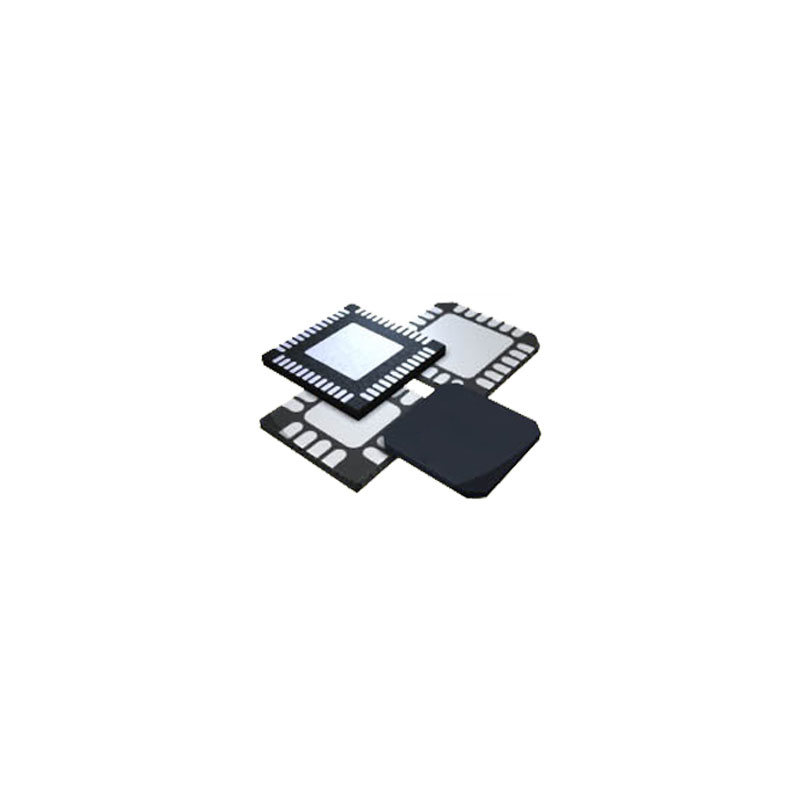
SiC638CD-T1-GE3
Vishay Intertechnology, Inc
50 A VRPower® Integrated Power Stage
-
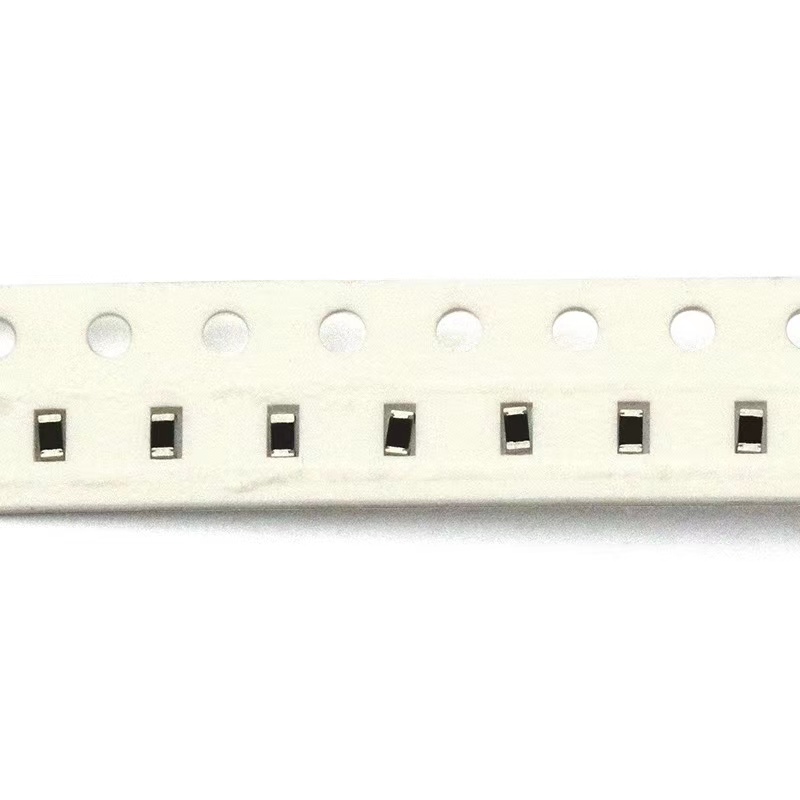
TFDS6501E-TR4
Vishay Intertechnology, Inc
IRDA TX/RX 4Mbps 3.3V/5V 8-Pin T/R
-
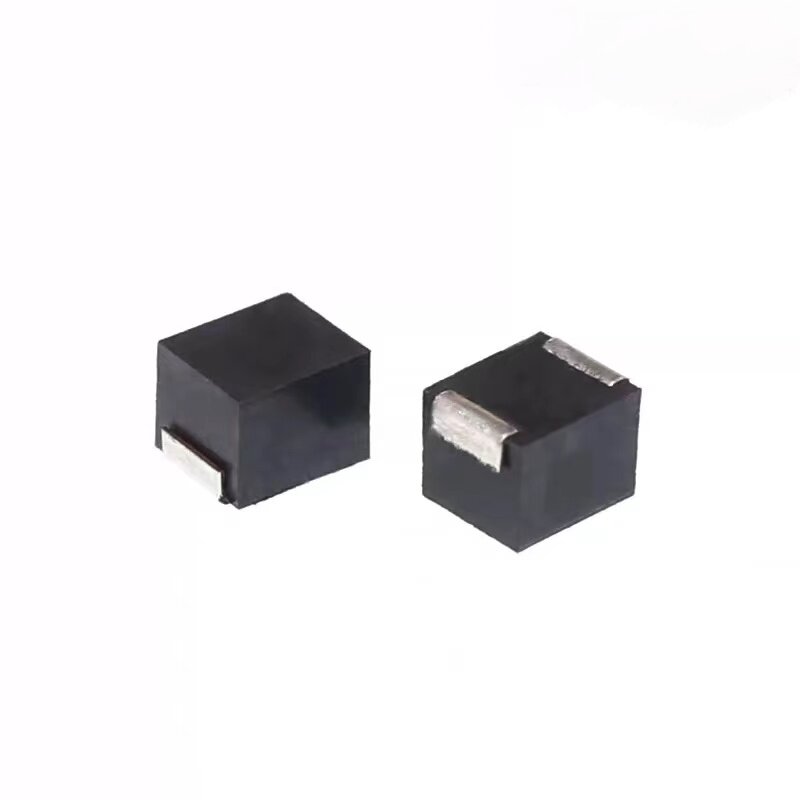
BYS10-25-E3/TR
Vishay Intertechnology, Inc
Schottky Diodes & Rectifiers 1.5 Amp 25 Volt
-
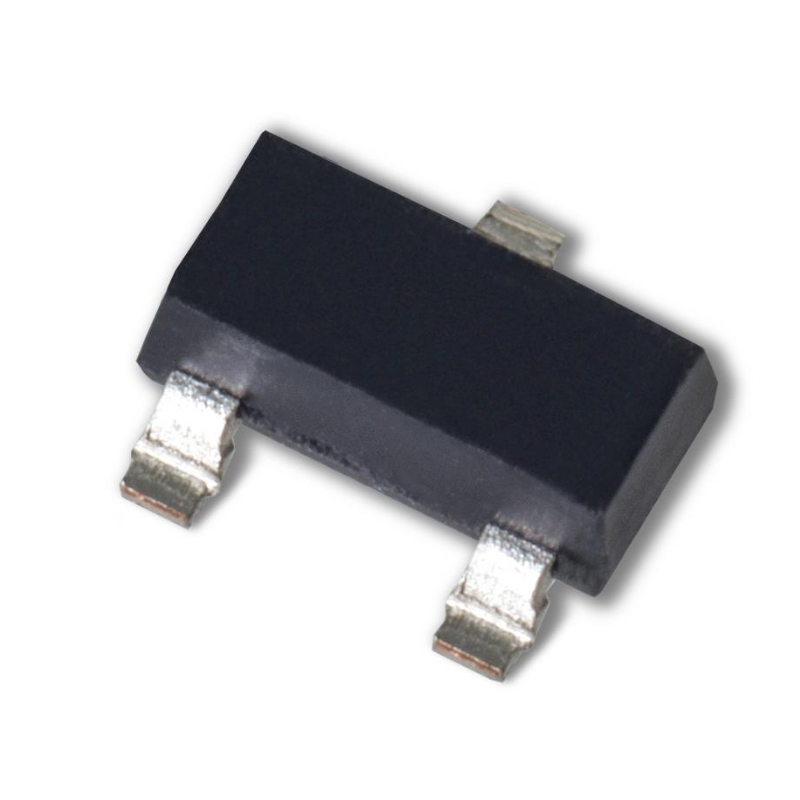
BZX84C10-E3-08
Vishay Intertechnology, Inc
Zener Diode, 10V V(Z), 5%, 0.3W, Silicon, Unidirectional
-

TSOP75238WTT
Vishay Intertechnology, Inc
IR Receiver Modules for Remote Control Systems
-

TFDU4301-TR1
Vishay Intertechnology, Inc
115.2kbs (SIR) IRDA Transceiver Side View
Related Parts
-
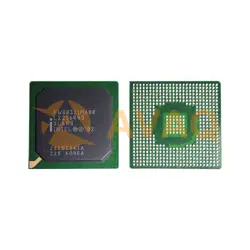
NHE6300ESB
INTEL
IO Controller Hub, NHE6300ESB
-
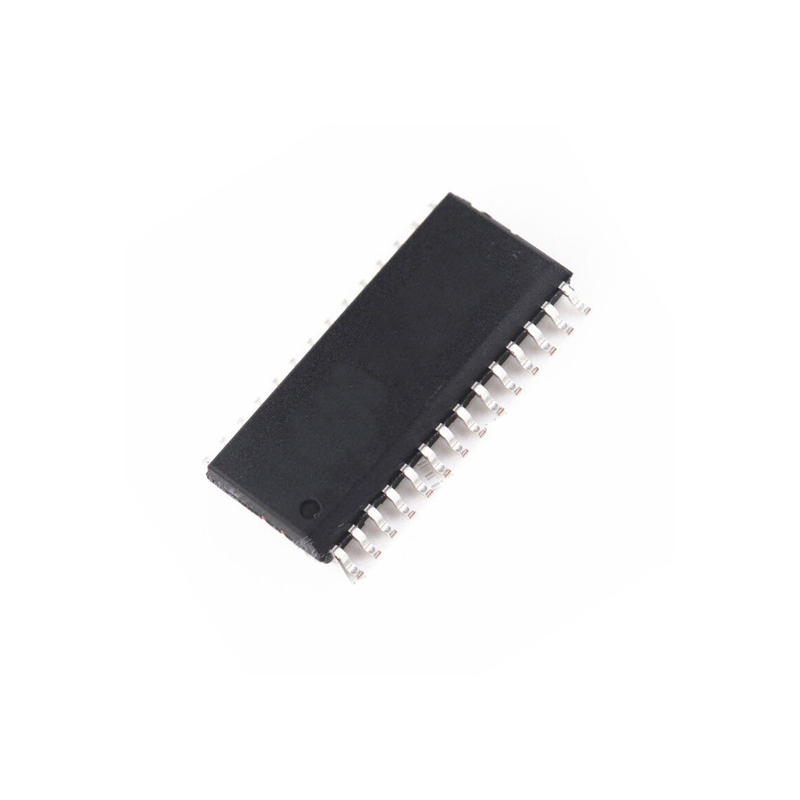
CM82C59A-12
Rochester Electronics Incorporated
Controller Interface 28-SOIC
-
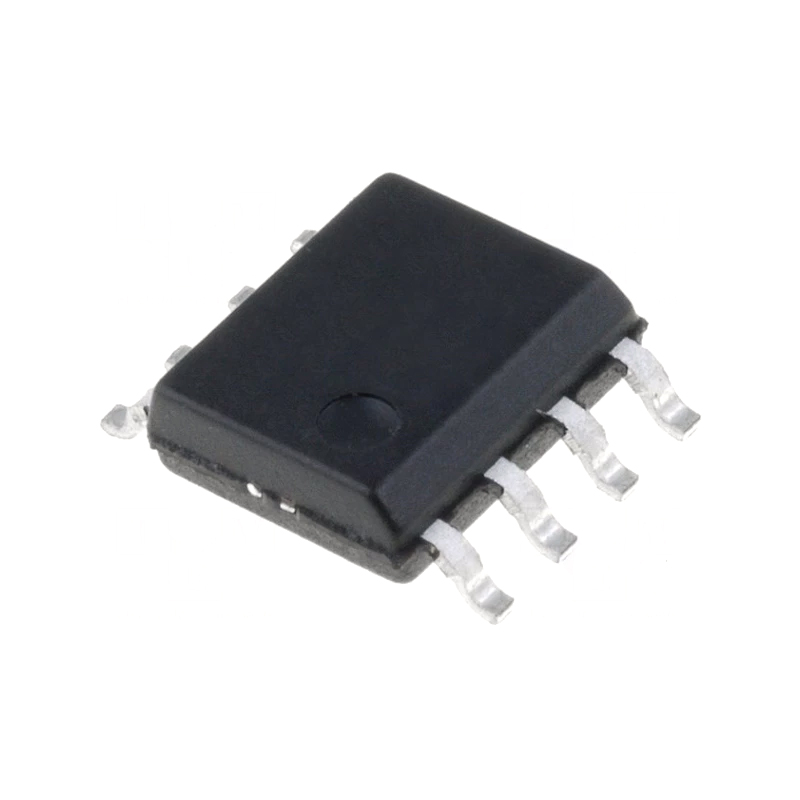
AD7816ARMZ-REEL7
Analog Devices, Inc
Temperature Sensor Digital, Local -40°C ~ 85°C 10 b 8-MSOP
-
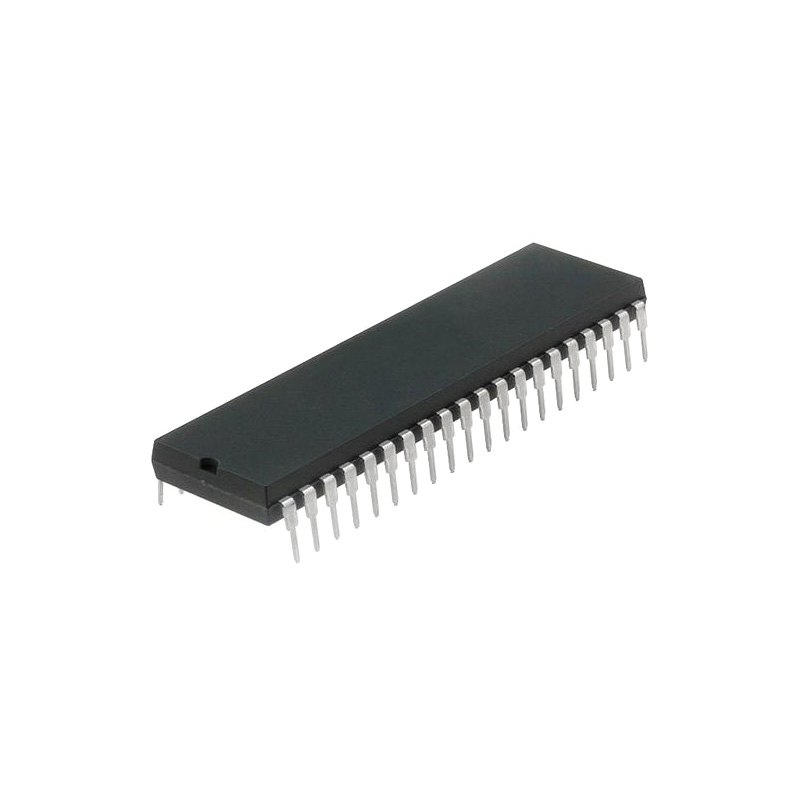
IOT7210P
Measurement Computing Corporation
Low-Power CMOS IEEE 488 Controller Device
-
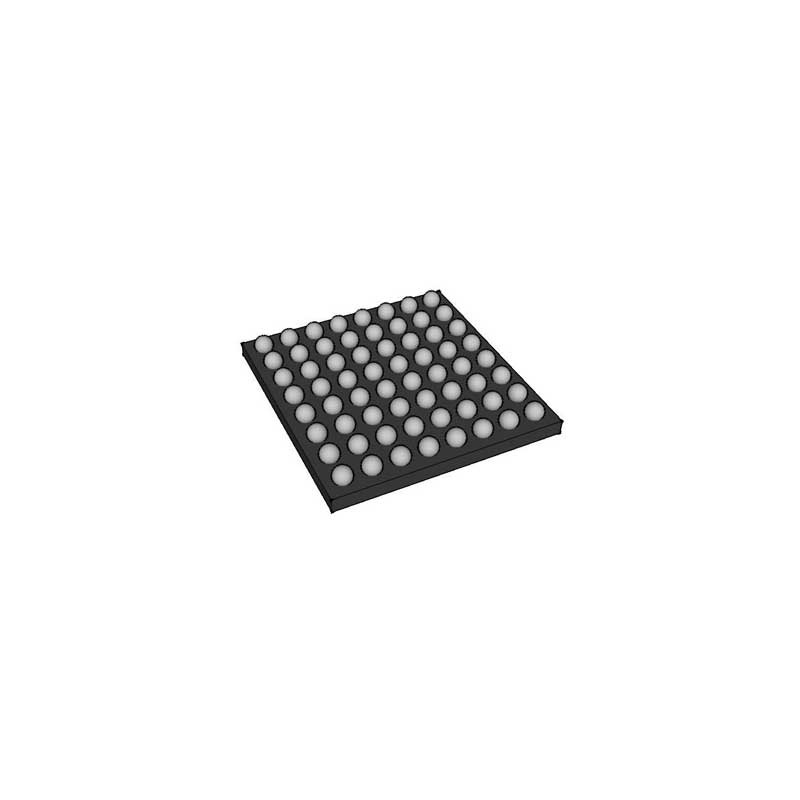
BLP9G0722-20Z
Ampleon
Trans RF MOSFET N-CH 65V 3-Pin TO-270 T/R
-
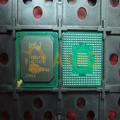
FW82801BA
Intel Corp
I/O Controller Phase Controller
-

ANX6212
Analogix Semiconductor
Multimedia Converter 2 Lane Display Port to VGA 2048x1152Pixels 5.4Gbps
-
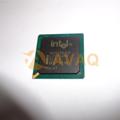
NH82801DB SL8DE
Intel Corp
I/O Controller 421-Pin BGA
-

ANX9834
Analogix Semiconductor
Multimedia Converter Display Port to VGA/LVDS 1600x1200Pixels/ 1920x1200Pixels 1.62Gbps/2.7Gbps 100-Pin BGA
-

CM82C59A
Rochester Electronics Incorporated
Controller Interface 28-SOIC
-

CHK080A-SRA
United Monolithic Semiconductors
Trans RF FET 60V 12A 5-Pin
-
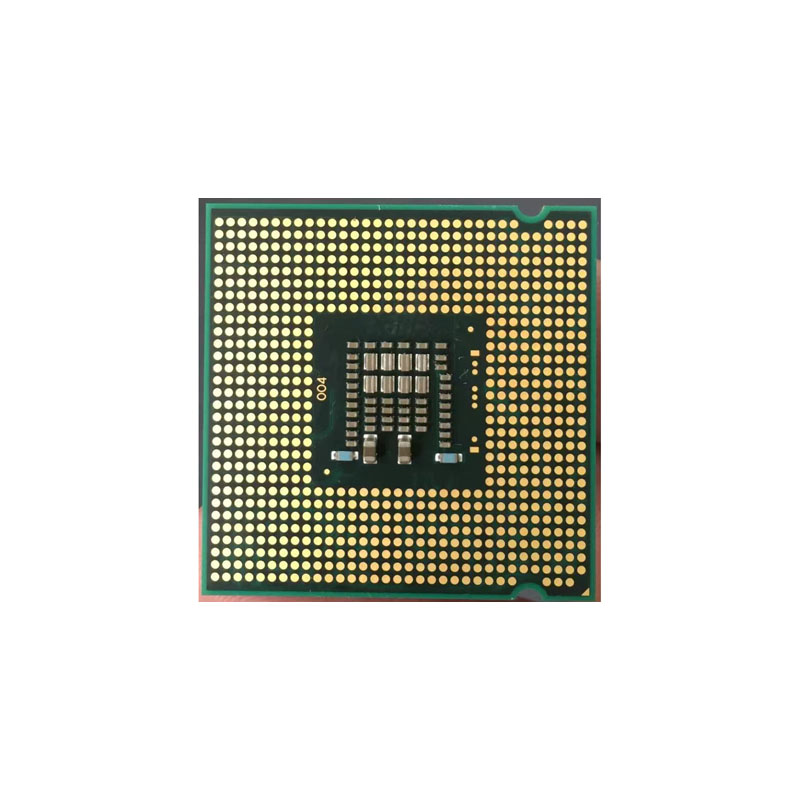
J-F2-B3A3-DY
Telit
JF2 FLASH MODULE (9600 BPS V4.1.2)
-

TC6000 G
GNS Electronics GmbH
GPS Receiver 1575.42MHz 1.95V 36-Pin LGA
-
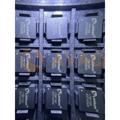
LT9611UXC
Lontium Semiconductor Corporation
Multimedia Converter MIPI DSI/CSI to HDMI2.0 6Gbps 64-Pin QFN
-

SKiiP 10NAB12T4V1
Semikron, Inc
Trans IGBT Module N-CH 1200V 6A 24-Pin

 Update Time: Jun 19, 2023 Consumer Electronics
Update Time: Jun 19, 2023 Consumer Electronics